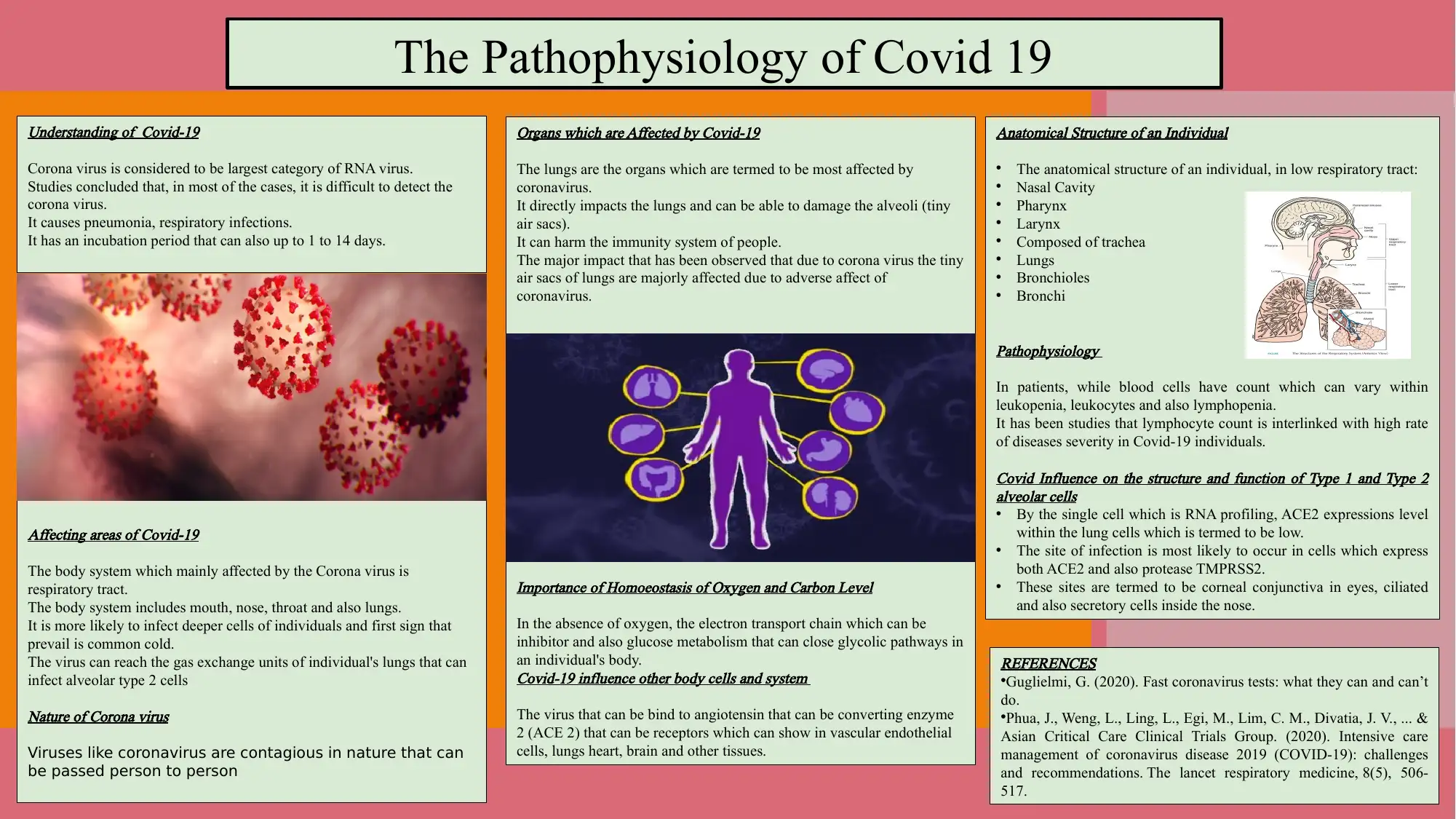Analysis of COVID-19 Pathophysiology: Understanding Organ Impacts
VerifiedAdded on 2023/06/18
|1
|549
|108
Report
AI Summary
This report provides an overview of the pathophysiology of COVID-19, focusing on the organs most affected by the virus, particularly the lungs and respiratory tract. It explains how the coronavirus, an RNA virus, impacts the body, detailing its effects on alveoli and the immune system. The report also discusses the virus's interaction with ACE2 receptors in various tissues, including the lungs, heart, and brain, and its influence on Type 1 and Type 2 alveolar cells. Furthermore, the report highlights the importance of maintaining oxygen and carbon dioxide homeostasis and explains how COVID-19 disrupts this balance. This document is available on Desklib, a platform offering a range of study tools and solved assignments for students.







![[object Object]](/_next/static/media/star-bottom.7253800d.svg)